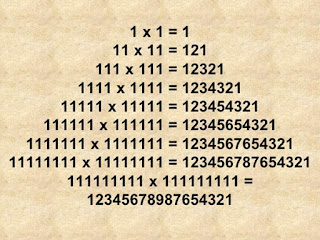1. Math Helps You Build Things

Ask any contractor or construction worker--they'll tell you just how important math is when it comes to building anything.
To create something of lasting value out of raw materials requires creativity, the right set of tools, and a broad range of mathematics.
Figuring the total amount of concrete needed for a slab; accurately measuring lengths, widths, and angles; and estimating project costs are just a few of the many cases in which math is necessary for real-life home improvement projects.
Whether students work in construction jobs in the future or own a home, having the ability to do minor home improvements will save a lot of money and provide a sense of accomplishment and self-reliance.
Teacher Tip: Consider incorporating a small building project in the classroom--like a simple house out of cardboard boxes or a small wooden boat from a kit--to reteach math-related skills such as measuring, estimating, angles, and following instructions.
2. Math is in the Grocery Store

One of the more obvious places to find people using math in everyday life is at your neighborhood grocery store.
Grocery shopping requires a broad range of math knowledge from multiplication to estimation and percentages.
Each time you calculate the price per unit, weigh produce, figure percentage discounts, and estimate the final price, you're using math in your shopping experience.
Teacher Tip #1: Encourage students to play math challenges at the grocery store with their family. For example, they can estimate the total cost of all groceries prior to checkout. For a greater challenge, encourage students to incorporate coupons, sales, and adjusted pricing for bulk items.Your little bargain shoppers will thank you later when they’re saving money on their own groceries.Teacher Tip #2: You could also organize a field trip to the grocery store--with the help of a few parents working with smaller student groups--making lists and pricing out items ahead of time, that your class can then use to cook with (see below)!
5. Math Helps You Save Money

Most experts agree that without strong math skills, people tend to invest, save, or spend money based on their emotions.
Here's the kicker:
To add to this dilemma, those individuals with poor math fundamentals typically make greater financial mistakes like underestimating how quickly interest accumulates.
A student who thoroughly grasps the concepts of exponential growth and compound interest will be more inclined to better manage debt.
Financial knowledge decays over time, so it’s important to keep young people involved.
By continually showing how specific math lessons apply to real life financial situations and budgeting, kids can learn how to properly spend and save their money without fear or frustration.
Teacher tip: Practice investing! Allot your students a set amount of pretend money individually or in groups. After teaching them about saving, investing, and interest, have them make financial decisions with their cash. Follow the stock market and check in on their savings weekly so they can see their totals rise or fall.
6. Math Lets You Manage Time

Time is our most valuable asset.
Teach your students about the value of time by not only teaching how to tell time on analogue and digital clocks, but about the world clock, time zones, calendars, and the value of how they spend their precious time.
In our fast-paced, modern world, we can easily get distracted and find the time has blown by without accomplishing what we meant to.
Teacher tip: Have your students set goals and determine how much time they must put aside daily or weekly to achieve these goals. Have your students calendar their time, create their own to-do lists, and give their tasks a number to rank what their priorities are. Not only are you teaching math, but you're helping a child learn how to organize their life and achieve their dreams!
The bottom line is:
Math is everywhere, operating in real life ways all around us.
So, the next time you or one of your students says, "I'm never going to use this math again!" remember the above examples, to help them be motivated to keep learning math!


